Dolphins offer hope in face of devastation
Resilience, hope and optimism in Philippine village completely destroyed by two typhoons in as many months

Something jumped out of the still waters and hope filled the hearts of those living in temporary shelters on the seashore.
Annalisa Capa, 44, carried her daughter in one arm and rushed to look closer.
“There are dolphins!” she shouted. “Thank God, you’ll get more fish today,” she told a fisherman standing nearby.
The sight of dolphins off the coast of the fishing village of Malinao town means life is back. People will soon have something on the table, especially when they greet the New Year.
For almost a month now, villagers of Baybay in the province of Albay, south of the Philippine capital, have been surviving on canned food and noodles from aid organizations.
Their village, their homes, their fishing boats and nets have been destroyed by the series of strong typhoons that hit the region.
“Life was hard, but it just got harder after the typhoons,” said Annalisa who earns a few pesos a day weaving grass that are used as roof for her neighbors’ huts.
The village was still in the process of rebuilding back their lives after strong winds knocked down everything.
Official figures estimated that over 4.2 million were affected by typhoons Rolly and Ulysses (international name Goni and Vamco, respectively) that hit the country in November.
Over 30,255 individuals were displaced in evacuation centers, with over 4,378 individuals remaining there.
Standing on the shore with Annalisa was Josefina Chaveniya, 55, who said her house “was totally washed out” during the typhoon.
Josefina, her fisherman husband, Henry, and their young son have sought shelter in a makeshift 15-square-meter room at the back of their old house.
“Before the typhoon, my husband can get two kilograms of fish a day,” said Josefina. “He would sell half of it for US$3 and bring home the other half.”
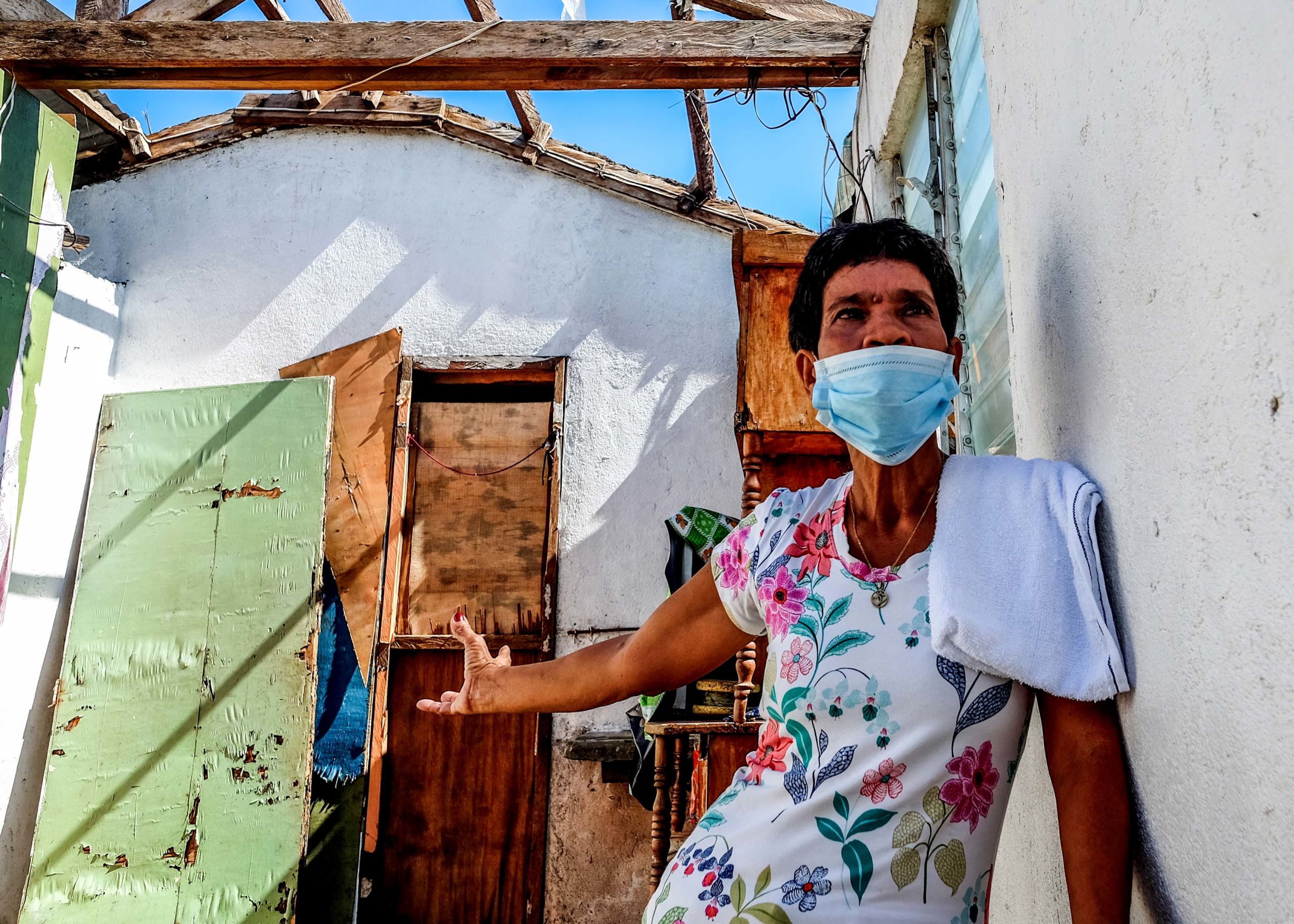
Josefina Chaveniya, 55, shows what remains of her house in the village of Baybay after a series of typhoons devastated the province of Albay in November. (Photo by Marielle Lucenio)
Josefina Chaveniya, 55, shows what remains of her house in the village of Baybay after a series of typhoons devastated the province of Albay in November. (Photo by Marielle Lucenio)
From the US$3, Josefina would spend US$1 for rice and the rest of the money would be used for their other needs.
With three mouths to feed, Josefina said they would be lucky if they could eat three times a day. “Sometimes, when it’s a bad day, I’d go out to borrow money so we won’t go hungry,” she said.
With the onslaught of the pandemic, nobody would lend her money. “Everyone’s suffering,” said Josefina.
Then the typhoons came. Josefina’s husband now earns about a dollar a day by helping pull the nets of other fishermen.
Josefina remains hopeful despite the odds. “I’m sure we’ll make it fun here in the community during the [New Year celebrations],” she said.
“We’re Filipinos and we laugh at anything. I just hope we’ll laugh not because of our empty stomach,” she quipped.
Josefina’s only wish was to have something on the table to welcome the new year with her family. “Even just a fish, or noodles, anything, really as long as we’re not hungry,” she said.
‘Band-aid solutions’
The non-government group Gawad Kalinga visited Josefina’s and Annalisa’s village before Christmas and “adopted” at least 30 homes.
Since the disaster last month, Gawad Kalinga has been giving free lunch to 300 people in the village.
“It may be a temporary solution, but imagine the economic impact to the families,” said Luis Oquinena, the organization’s head.
“By providing the kids or the elders with lunch, the parents can save and just spend for their food,” he said.
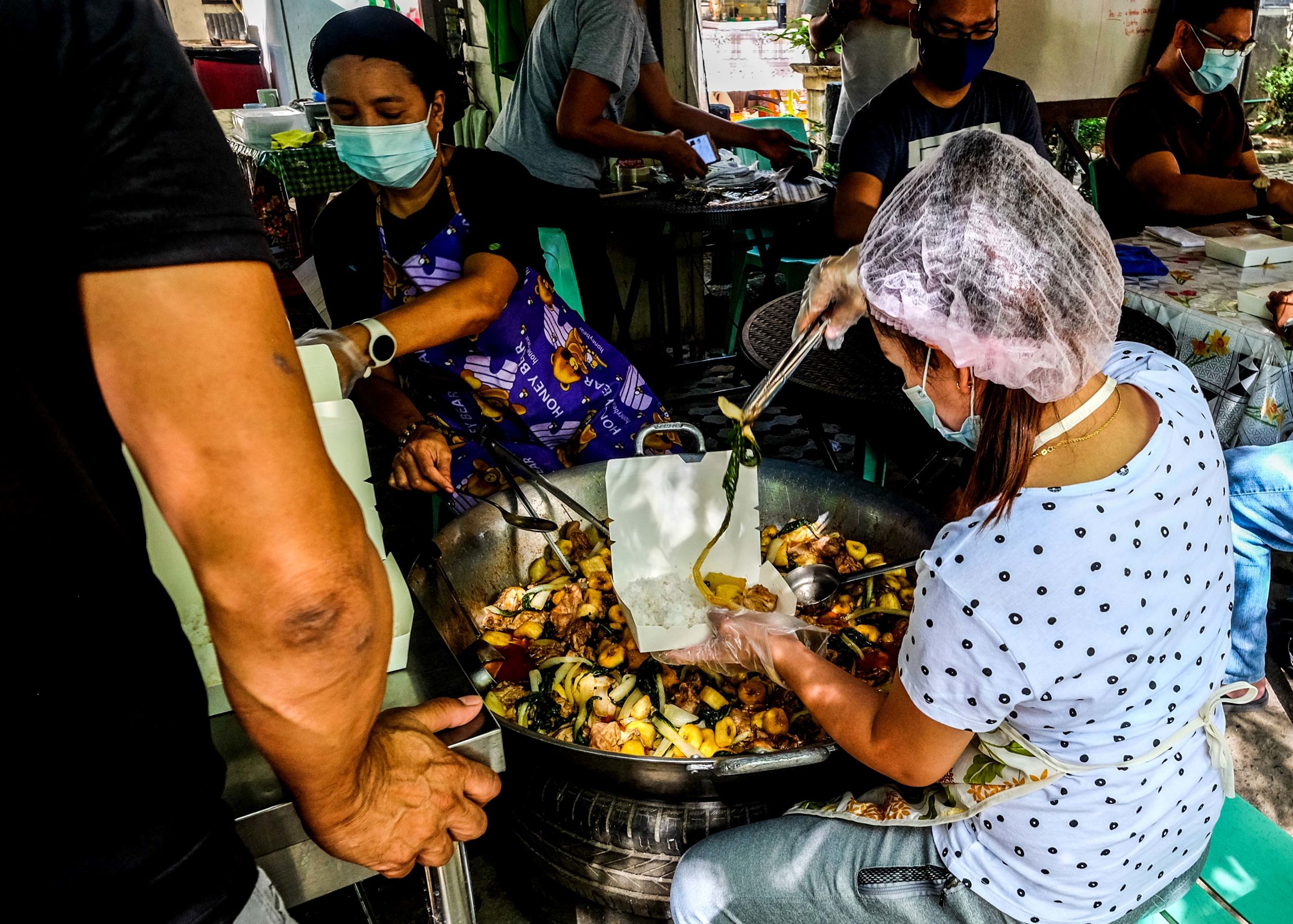
Members of a church organization prepare food for distribution to the homeless and those most affected by the pandemic. (Photo by Marielle Lucenio)
Members of a church organization prepare food for distribution to the homeless and those most affected by the pandemic. (Photo by Marielle Lucenio)
Gawad Kalinga’s “Balangay program” also provides fishing villages help in the repair of their boats.
“Dependency comes in when we address hunger with just relief operations, with just feeding programs,” said Oquinena.
Hunger in the Philippines has fallen down to 9.1 percent, or an estimated 2.3 million families were out of the hunger index in September 2019, a survey done by pollster Social Weather Stations noted.
But due to the pandemic, a record-high 7.6 million Filipino families experienced involuntary hunger at least once from June to August this year.
Of the figure, about 2.2 million households suffered from severe hunger.
In a 2019 report, the United Nations’ Food and Agriculture Organization ranked the Philippines as the highest in Southeast Asia in terms of food insecurity with 59 million people “severely hungry.”
Photos by Marielle Lucenio: Everything inside the house of Josefina Chaveniya is soaked in floodwater.
The door of a house in the village of Baybay has been destroyed by strong winds during the typhoon.
A chair made of bamboo is left inside a roofless house in the village of Baybay after the typhoon.
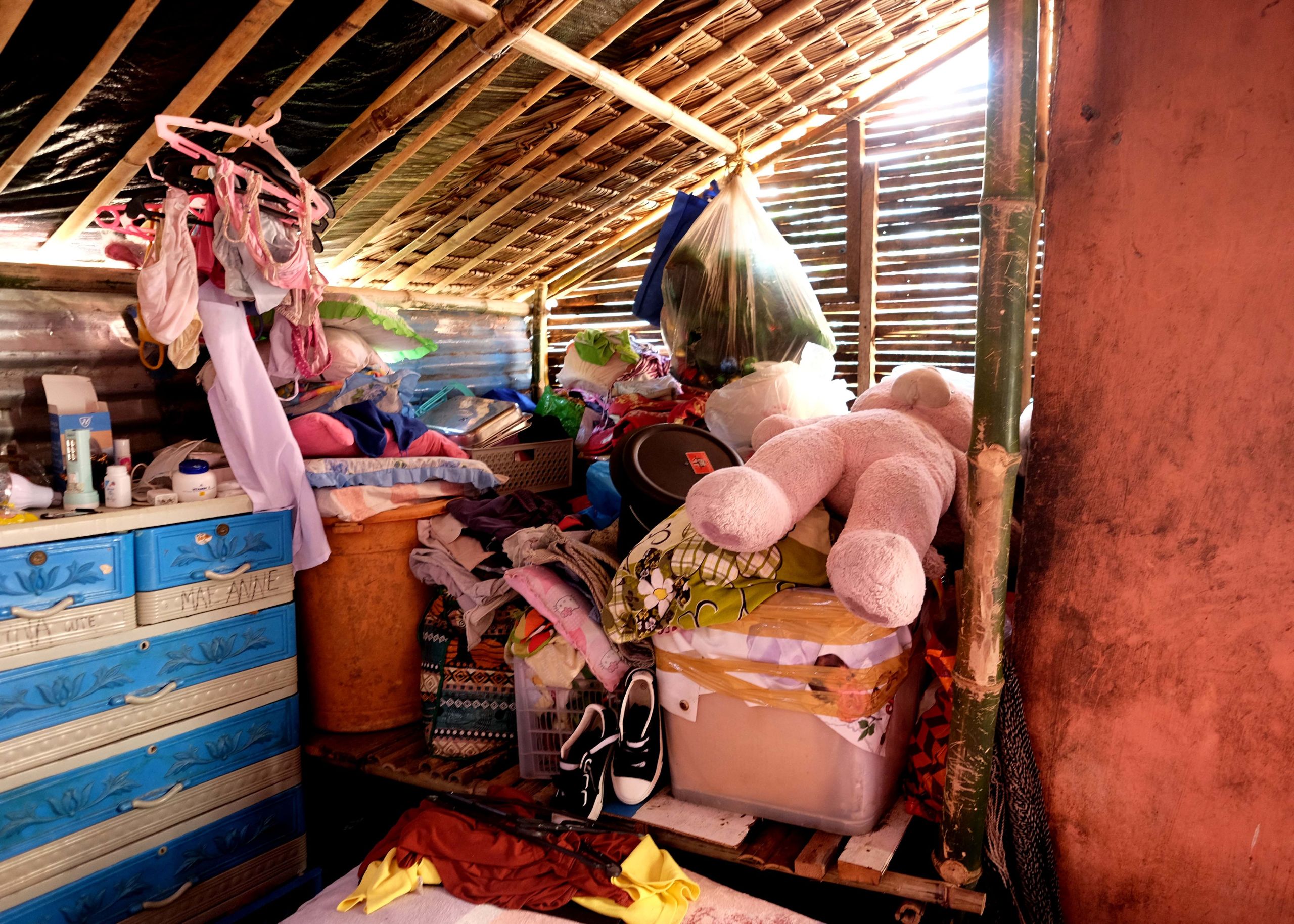
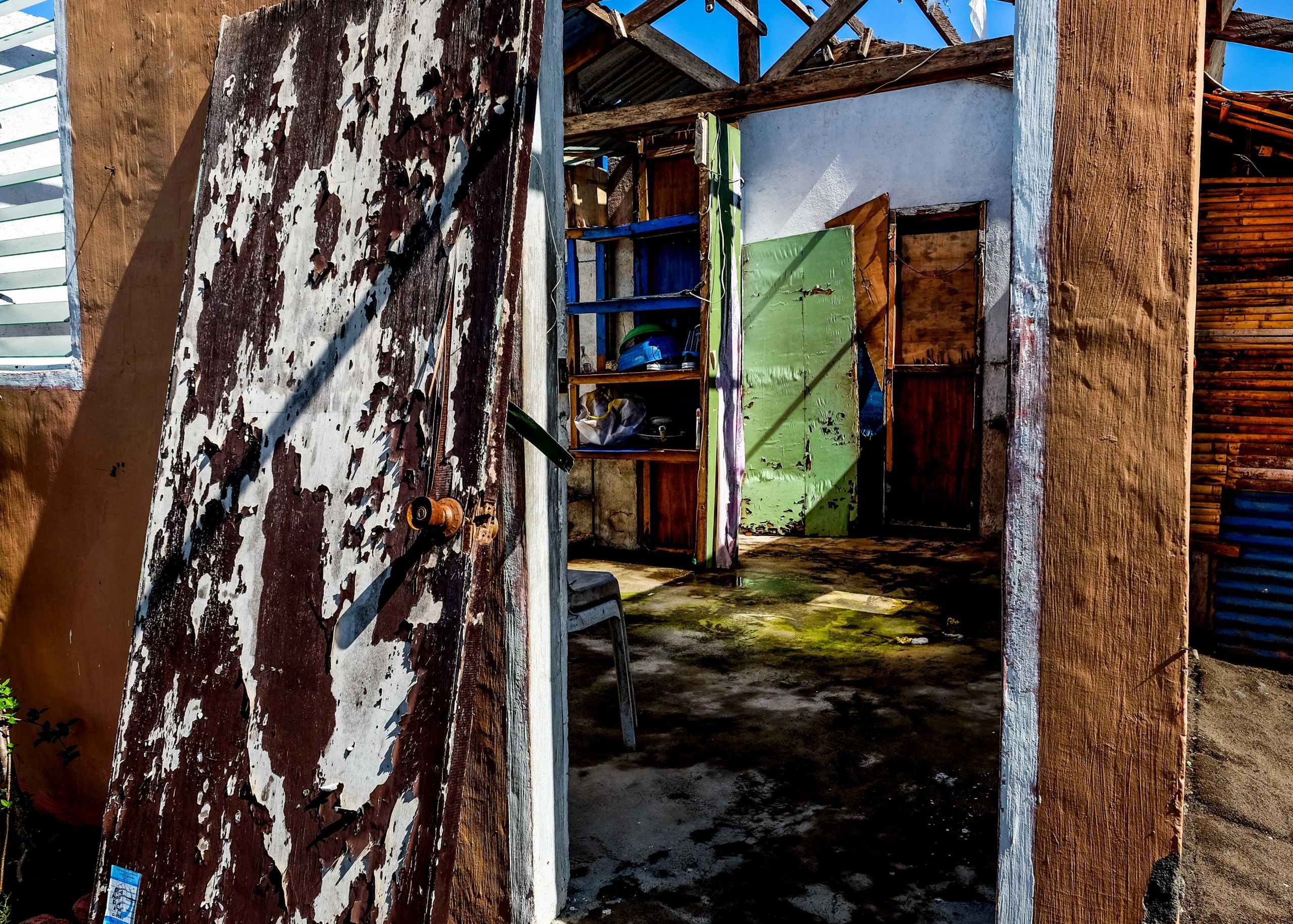
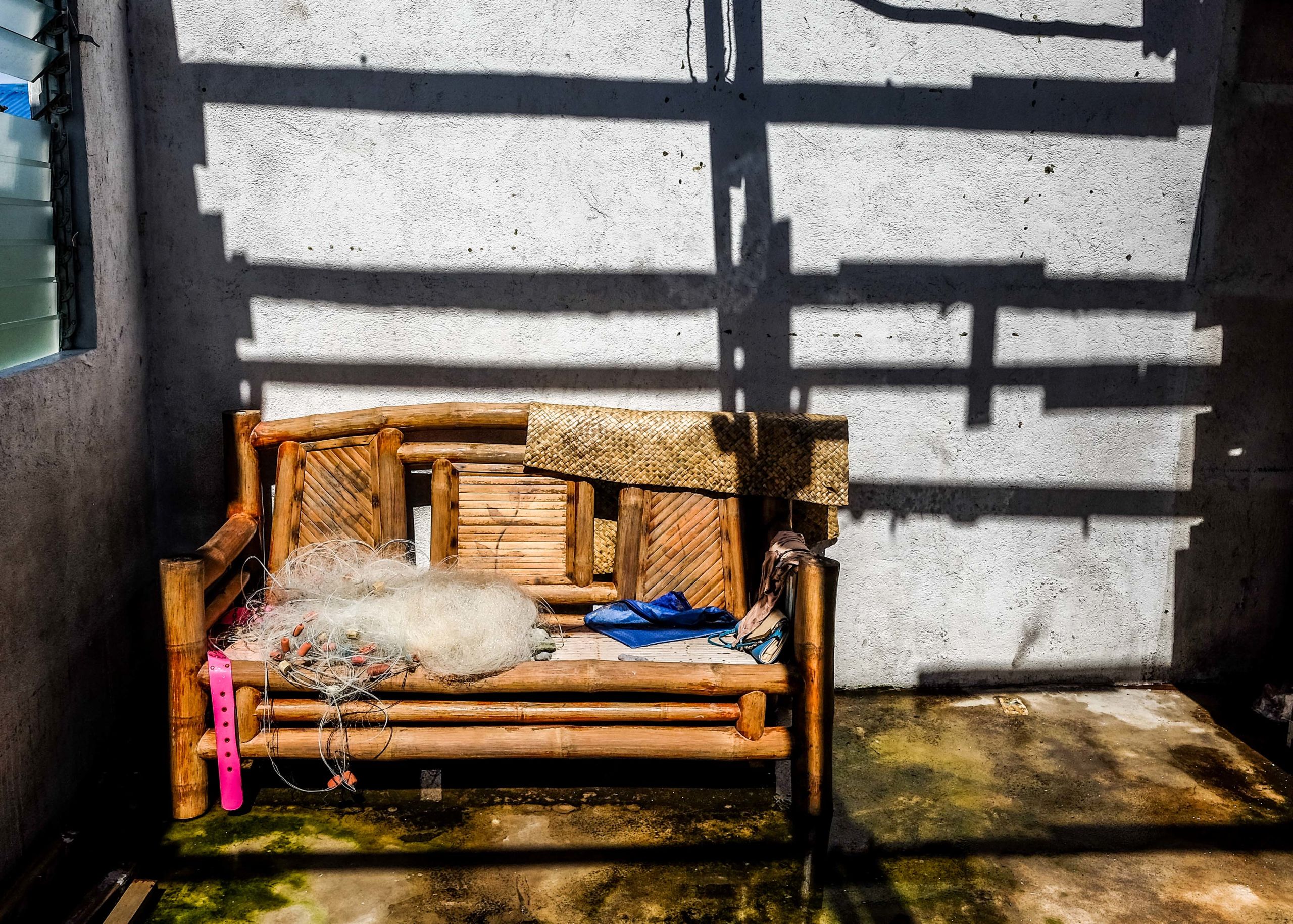
The Philippine government has recognized that hunger is a problem the country continues to face.
Secretary Karlo Nograles, head of the government’s Task Force on Zero hunger, said efforts to fight hunger “will have to restart.”
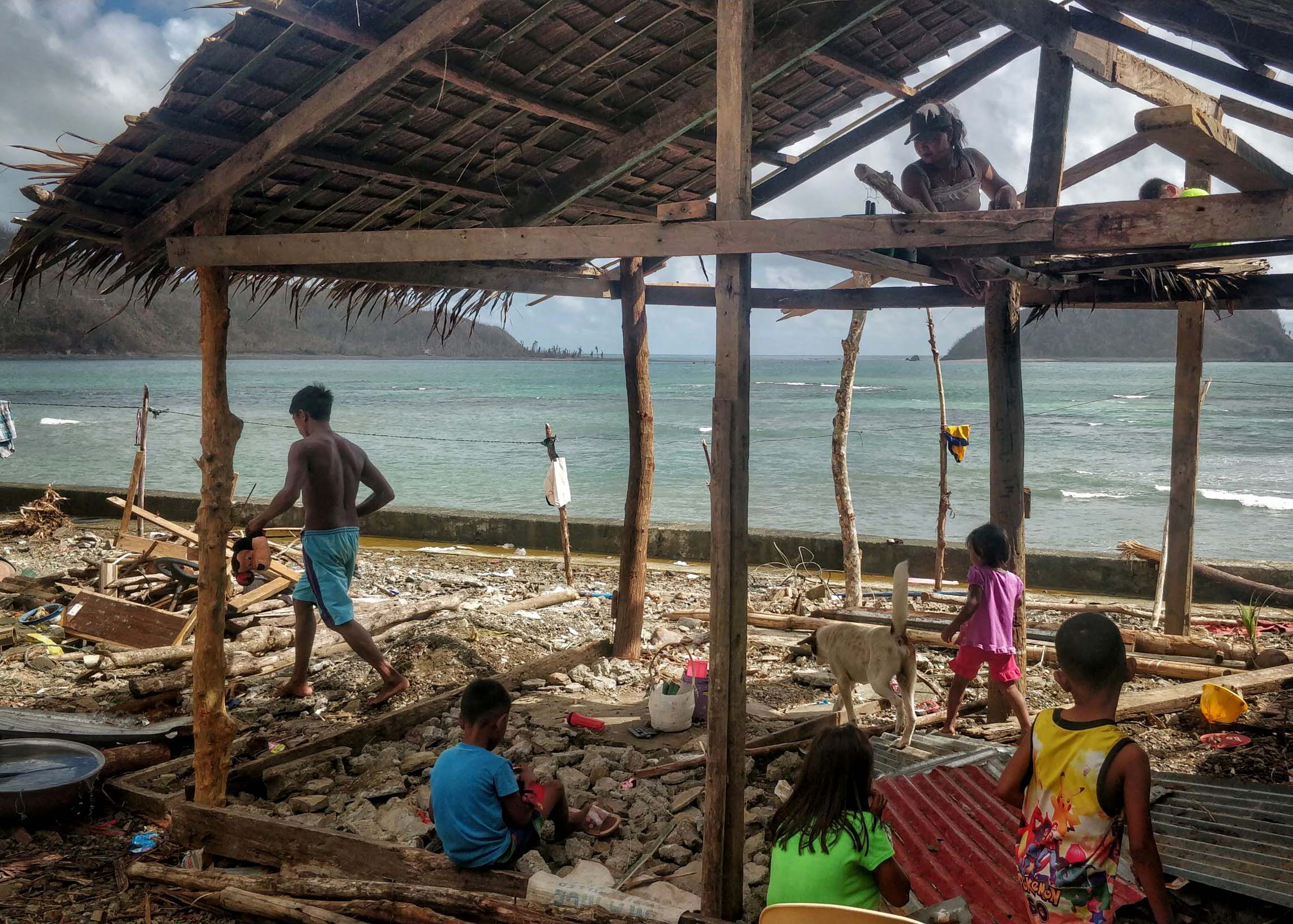
Other devastated villages in the province of Albay have also started to rise from the destruction brought by the series of typhoons. (Photo by Vincent Go)
Other devastated villages in the province of Albay have also started to rise from the destruction brought by the series of typhoons. (Photo by Vincent Go)
The country earlier aimed to end hunger by 2030 with a target of 25 percent improvement every two and a half years.
Nograles, however, said the program “will go off track due to the pandemic.”
“So we have to adjust, and our first goal is to bring hunger to pre-COVID-19 level,” he said. “We have to reset our goals.”
Back in the village of Baybay, Josefina and her neighbors are looking forward to the implementation of government and non-government programs promised to them.
With the appearance of the dolphins, she’s optimistic that everything will be alright in the coming year.
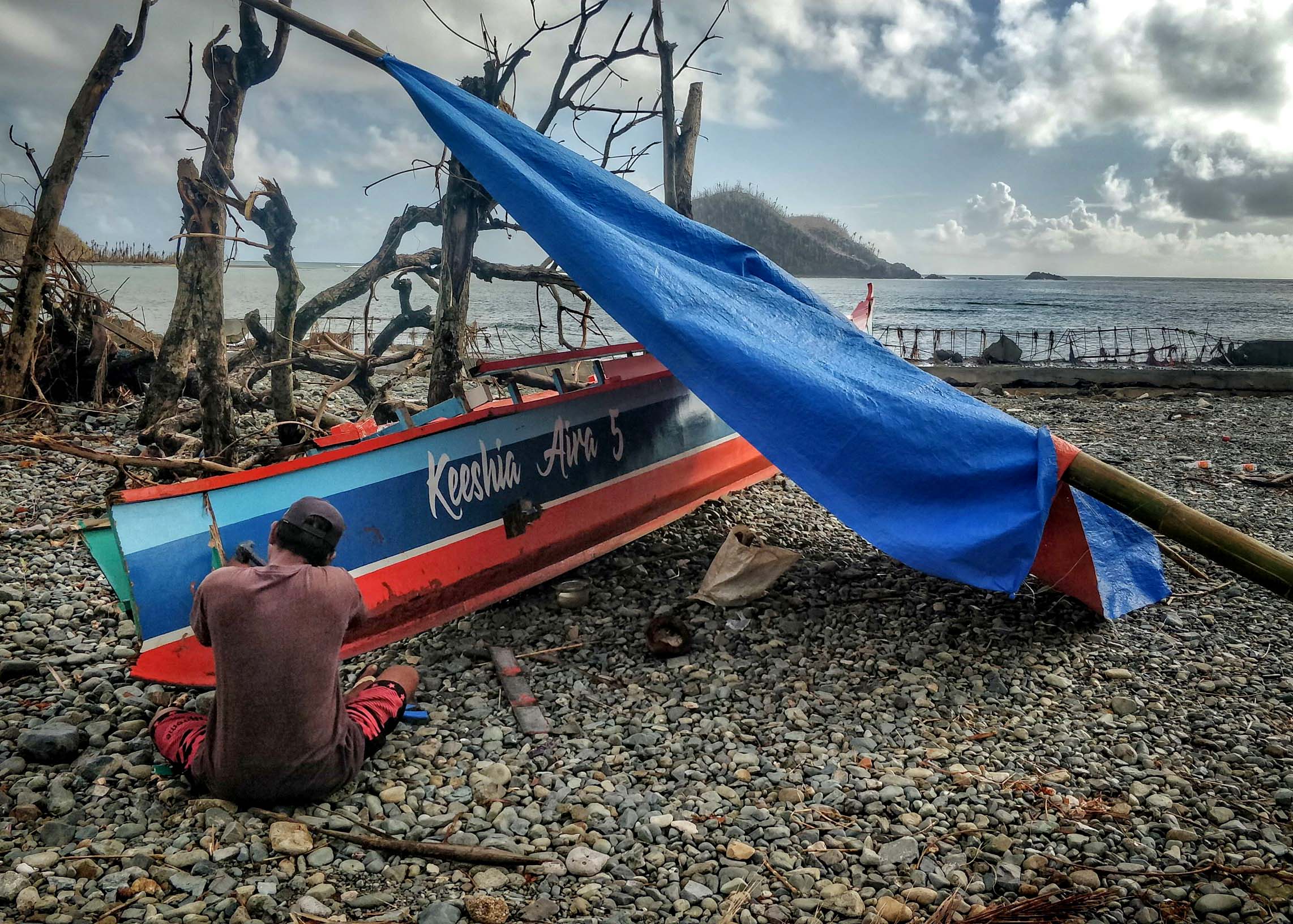
In several coastal villages, people have started to repair their boats. (Photo by Vincent Go)
In several coastal villages, people have started to repair their boats. (Photo by Vincent Go)
Text and photos by Marielle Lucenio
with additional photos by Vincent Go
Published December 29, 2020
© Copyright MMXX LiCAS.news
